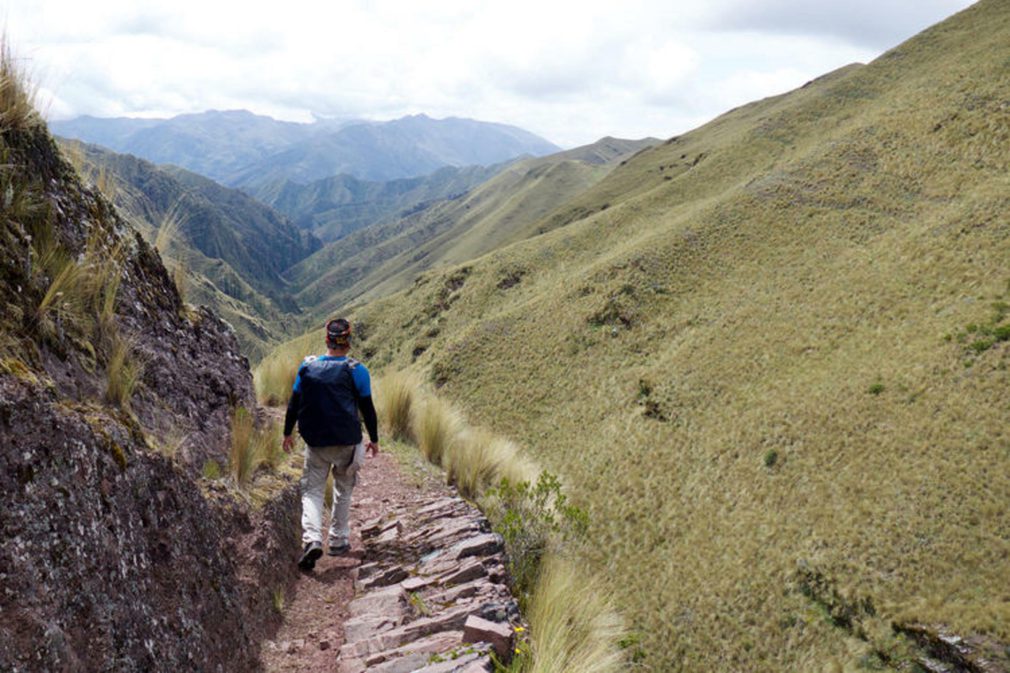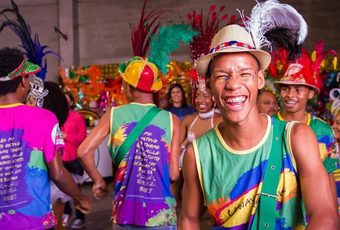What is the Huchuyqosqo Trail?

For most, hiking in the Peruvian Andes means only one thing: the Inca Trail to Machu Picchu. Justifiably famous for its fantastic scenery and the once in a lifetime draw of arriving to the citadel through the Sun Gate, its popularity means that permits these days sell out up to six months in advance. With a firm belief that the joy of hiking in the mountains means getting as far away from the crowds as possible, we plan the Inca Trail so that you have the road to yourself, no matter how many crowds are further up ahead or behind you.
Nonetheless, the Inca Trail is just one small piece of the road network that spanned the Inca Empire at its height. In the Peruvian Andes, countless other ancient routes connect small villages and archeological sites through seemingly impassable hills. Whilst still in use by locals, they remain virtually unknown to most visitors and are a wonderful opportunity to get off the well-trodden paths and discover more of the region's spectacular natural and cultural wealth.
On my last visit to Cusco, I headed out into the highlands to walk along a trail I hadn't done before - following an ancient path from the temple of Tambo Machay to the ruins of Huchuyqosqo, which were built in the early 15th century in a hidden corner of the Andes, high above the Sacred Valley.
Starting the day with a beautiful drive up through the green hills around Cusco, the evidence of the Incas' archeological legacy is everywhere, from the monumental walls of Sacsayhuaman to the rather strange carved rocks, underground altars and tunnels of an area that is locally named 'Zona X.' in eucalyptus woods near the stone fountains of Tambo Machay, the trail immediately takes you up into remote highlands, reaching a pass at 4,200m after about an hour's walk.
I was greeted at the pass by a solitary llama and the cry of a cara cara circling overhead - for Martyn, our Pura guide, this was an intense sign of good luck. As the cara cara flies, we were still close to Cusco but the landscapes still feel astonishingly remote. You are unlikely to see any hikers for miles along this part of the trail - perhaps the only people you will see are farmers tilling the land for potatoes, or children tending herds of sheep.
Continuing on, the trail flattened out as we crossed gently undulating hills past lagoons and wetlands, with panoramic views of distant mountains and lakes to our right. The way is signposted by apachetas - traditional signposts made from piles of rocks, often with a little cross on top, which have a strong spiritual significance in the Andes. Guiding yourself via the apachetas requires an intimate knowledge of these hills to avoid getting lost and following the wrong markers, but with Martyn's expert guidance, we arrived at Tres Apachetas pass, the highest point of the day at 4,292m, marked by three tall stone cairns.
From here it was all downhill, following an original paved section of the Inca road. From the sparse grasslands higher up, we descended into greener landscapes with native queuña trees and lupins, then followed the course of a stream through a narrow ravine.
The approach to Huchuyqosqo is along a dramatic path around the edge of the mountainside with spectacular views of the Sacred Valley several hundred meters below. The imposing gate is an incongruous sight after several hours in the wilderness, though the site was certainly prime real estate for an Inca king - set on a plateau overlooking the valley but completely hidden from sight. The ruins are extensive - huge walls, aqueducts and terraces slope down towards the almost vertical cliffs as they drop away to the valley below.
You can carry on down to the Sacred Valley and finish the hike the same day if you wish, but by doing so you miss one of the most unique parts of the hike - the chance to spend a night camping up here, right next to the ruins. That evening, enjoying the warmth from the stove as our chef, Percy, prepared dinner, I listened as he and Martyn shared stories mixed with Andean beliefs - stories of condors and the mythical qualities that local people attach to them. Though Huchuyqosqo's impassive stone walls look out on the same landscape as they did at the time of the Viracocha Inca, the lights of the villages below served as a distant reminder of the modern world.
The next day, we walked to the Sacred Valley along a trail that zig-zagged steeply down the mountainside. Just before we met our driver to return into town, Martyn pointed up to a nearby ridge where a condor circled above us: an advisor, he believes, that watches over you and warns you of trouble. For so many people in the Andes, this strong connection with the natural world acts as a guide and a lesson about life. Getting out into these hills for only one day felt like a lesson, to seek out such rich moments along little-travelled paths in the company of local people more often.
Our Peru holidays Get in touch Subscribe to The Pothole
The Pothole is Pura Aventura's popular monthly email. We share what we love, what interests us and what we find challenging. And we don't Photoshop out the bits everyone else does. We like to think our considered opinions provide food for thought, and will sometimes put a smile on your face. They've even been known to make people cry. You can click here to subscribe and, naturally, unsubscribe at any time.
The Pothole is Pura Aventura's popular monthly email. We share what we love, what interests us and what we find challenging. And we don't Photoshop out the bits everyone else does. We like to think our considered opinions provide food for thought, and will sometimes put a smile on your face. They've even been known to make people cry. You can click here to subscribe and, naturally, unsubscribe at any time.








